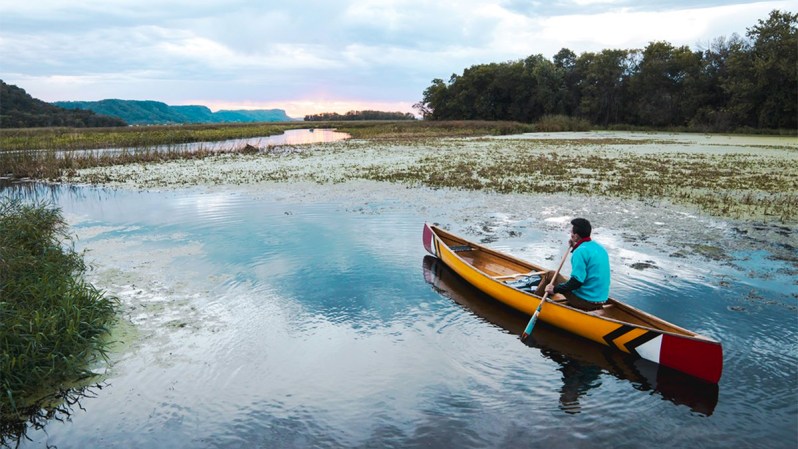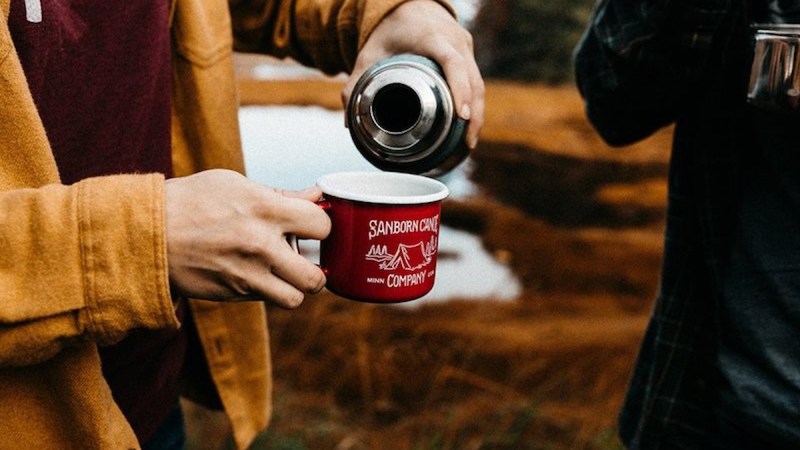Canoeing is the new CrossFit.
Pretty soon you’ll be hearing more people talking about their canoeing than you hear vegans praise the glory of sprouts and CrossFit-ers brag about their WOD.
And honestly, with boats like SanBorn Canoe Co.’s new Prospector 16’, we’re psyched for the new counterculture.
We at The Manual aren’t privy to telling you exactly what you need, but we’re going to suggest a new canoeing lifestyle, which begins with buying this badass, rustic Prospector Canoe 16’ ($3,900) from Sanborn Canoe.
Made with luscious cherry decks and handles, plus cherry ribs and ash & cane seats (caned not strung), this piece makes us want to simultaneously hang it up on the wall and slap it on the water this summer. It’s the perfect blend of art meeting function, and a highly unique item to own (making it a nice little status symbol as well).
Constructed from a carbon-fiber, Kevlar, and fiberglass layup, the ash and cherry hardwood hull really displays the quality of the canoe’s craftsmanship (made even more alluring by the slick, gel-coat finish).
The makers at Sanborn Canoe chose the bold, pioneer throwback red, black, white, and yellow coloring as an ode to their first-ever canoe project back in 2009—a cedar strip canoe with hand-painted hull in the same colors. This canoe was the start to what has grown to be a fully functioning canoe business.

Back in the summer of ‘09, SanBorn was a simple passion project undertaken by a group of friends, led by cousins Zak Fellman and Todd Randall. Together the group would take annual canoe trips to escape the humdrum of regular work. They labored night and day that entire summer to create one canoe. Much to their luck and labor… it didn’t sink.
“One of our early inspirations was our Grandpa telling us stories about making canoes and paddles back in the 60s with local youths,” says Fellman and Randall. “So we kind of like to think that we’re a 50-plus year old company.”
By now in 2017, the guys are experts, making each canoe and paddle in their Minnesota woodshop. Their current focus is an “explorers line” that encompasses goods relating to “the culture of the Canoeist.” (If you’re having trouble thinking of what that would be, think wool beanies and rugged leather suspenders.)
But in light of their expansion to accessories that can be worn on or off the water, the cousins at SanBorn assert that their business is still firmly planted in the canoe itself.

For the new Prospector Canoe, the guys adopted the mold from the heritage Merrimack Prospector. But they say their model spins on a dime.
They’re dubbing the new Prospector 16’ (available in May), “a great all-around canoe.” In their language that means it’s a hardy piece of equipment made for week-plus adventures or just playing around on the water.
Master Paddler Bill Mason even wrote in his book The Song of the Paddle, “If I could have only one canoe, it would be the original 16-foot Prospector.”
Another perk: for the quality of its make, it weighs only 52 pounds and holds about 900 lbs.
Now we’re going to take a shot and say you don’t know much about canoes, but can appreciate the craftsmanship and design of the SanBorn Prospector. The good news is that the experts at SanBorn Canoe have anticipated our lack of expertise and dedicated about half of their website to helping us take the next step which is finding the right paddle. A huge chunk of their website is devoted to finding your right paddle length, which paddle class you’ll need, how to restore or take preventative care for our paddles, and why they oil the grips.

What you’ll quickly discover as you make the transition from your life as you know it to your life as an underground canoeist, is there’s a horde of people equally as psyched about the activity and its stunning equipment.
It just hasn’t hit the mainstream quite yet. So in a way, you really are a modern-day prospector. But, to satisfy your canoeing urges, you can always enter Sanborn’s free paddle giveaway for your shot at one of their stunning oars.
Photos courtesy Sanborn Canoe Co.


